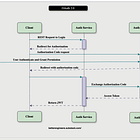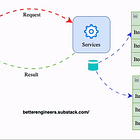Distributed System Refreshers :
Basics
These are foundational concepts for understanding how APIs work.
HTTP Versions:
Differences between HTTP/1.1, HTTP/2, and HTTP/3.
Performance improvements (e.g., multiplexing in HTTP/2, reduced latency in HTTP/3).
HTTP Methods:
Common methods like
GET,POST,PUT,DELETE,PATCH, and their appropriate use cases.
Status Codes:
Response codes like
200 OK,404 Not Found,500 Internal Server Error, and their meanings.
Headers:
Key-Value pairs in API requests and responses (e.g.,
Authorization,Content-Type,Accept).
CORS (Cross-Origin Resource Sharing):
Mechanism allowing restricted resources to be accessed from different origins.
Caching:
Techniques to reduce API load and latency using tools like
Cache-ControlandETag.
API Styles
The structure and format of APIs.
URL, Query, and Path Parameters:
Proper use of query parameters (
?key=value) and path parameters (/resource/:id) for API routing.
TCP/IP and DNS:
Understanding how data flows through the network and how APIs are resolved to IP addresses.
REST APIs:
Representational State Transfer: A stateless API style focused on resources and HTTP.
JSON and SOAP:
Data formats (e.g., JSON) and older API protocols like SOAP.
GraphQL:
Flexible query-based API allowing clients to request specific data.
gRPC:
High-performance, RPC (Remote Procedure Call)-based API often used in microservices.
RESTful APIs
Advanced concepts for building and maintaining REST APIs.
REST Principles:
Statelessness, uniform interfaces, and resource-based architecture.
URI Design:
Creating intuitive, meaningful endpoints (e.g.,
/users/{id}/orders).
Versioning:
Handling API changes gracefully using methods like
/v1/resource.
CRUD Operations:
Basic operations: Create, Read, Update, Delete.
Pagination:
Managing large datasets with techniques like
limitandoffset.
Controlling the number of API requests to prevent abuse.
Idempotency:
Ensuring repeated requests (like
PUT) have the same result.
HATEOAS:
Hypermedia links that provide API navigation.
Error Handling:
Returning meaningful error codes (
400,500) and error messages.
Authentication
Ensures secure access to APIs.
Basic Auth:
Sending credentials (username/password) with requests (not recommended for modern APIs).
Token-Based Auth:
Using tokens for authentication, e.g., JWT (JSON Web Token).
OAuth 2.0:
A popular protocol for authorizing users securely.
Session-Based Auth:
Maintaining user sessions on the server side for authentication.
Authorization Methods
Defines what actions a user can perform.
RBAC (Role-Based Access Control):
Permissions are granted based on user roles.
ABAC (Attribute-Based Access Control):
Permissions are determined by user attributes (e.g., time, location, job title).
API Performance
Techniques for optimizing API speed and reliability.
Performance Metrics:
Tools to measure API response time, throughput, and error rate.
Caching Strategies:
Store frequent responses in memory (e.g., Redis, CDN).
Load Balancing:
Distributing traffic across multiple servers.
Rate Limiting:
Preventing API overload by limiting requests per user/IP.
Profiling and Monitoring:
Identifying performance bottlenecks.
Performance Testing:
Simulating high loads using tools like JMeter.
Error Handling:
Handling exceptions gracefully to avoid crashes.
API Integration Patterns
Architectural approaches for API interactions.
Synchronous vs. Asynchronous:
Synchronous APIs return responses immediately; asynchronous APIs defer responses.
APIs react to events (e.g., Kafka, RabbitMQ).
Centralized management for routing, authentication, and monitoring.
Microservice Architecture:
Breaking applications into smaller, modular APIs.
Webhooks push data to clients; polling requests data at intervals.
Batch Processing:
Handling multiple requests or data in bulk.
Message Queues:
Using tools like RabbitMQ or AWS SQS to queue API requests.
Testing
Ensures APIs work as expected under different scenarios.
Unit Testing:
Testing individual API endpoints.
Integration Testing:
Verifying API interactions with other systems.
Functional Testing:
Ensuring the API fulfills its intended functionality.
Load Testing:
Checking how APIs perform under high traffic.
Mocking APIs:
Using mock APIs to test without affecting production.
Contract Testing:
Ensuring API contracts (specifications) are fulfilled.
Documentation
Ensures developers can understand and use APIs effectively.
Swagger/OpenAPI:
Tools for documenting APIs interactively.
Platforms for creating detailed API documentation.
Another popular tool for API design and documentation.
Widely used for testing and sharing APIs.
Distributed System Learning Roadmap
Distributed systems have become a cornerstone of modern software architecture, powering everything from social media platforms to financial services. If you're looking to build scalable, resilient, and high-performance systems, mastering the core concepts and best practices of distributed systems is crucial. In this blog post, I will outline a








